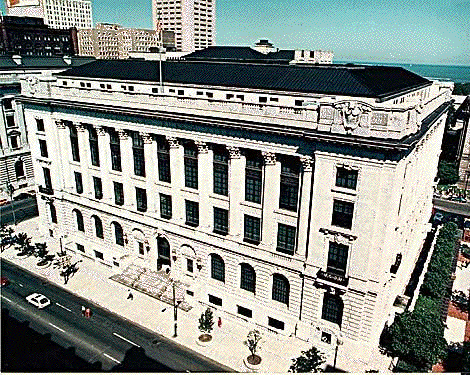The Context

The Cleveland Public Library is an urban research library that has taken a comprehensive approach to offering electronic information, as it has with library materials in more traditional physical formats. With the strongest public collection in the United States outside of New York, the library has developed electronic resources that mirror the breadth and depth of its significant collections. The library has also adopted a regional approach to library automation, and in this regard serves as a leader among Cleveland area public libraries.
Growth and expansion are the library’s watchwords. It is constructing a new modern wing of the central library, equipped to handle tomorrow’s technology and to provide better service, and is building new branches to serve outlying districts in the metropolitan area. At the same time, more and more people are using the library and its electronic resources. As a pioneer in library automation, the Cleveland Public Library over 17 years has constructed a vast, but carefully selected array of electronic information resources, gathered seamlessly behind one online user interface, called The Cleveland Public Electronic Library. Through an alliance called CLEVNET, the library provides electronic information, technical support, and delivery services to 23 libraries in the metropolitan Cleveland area.

Cleveland is a reading public, and the metropolitan area of Cleveland is rich in library resources, as well as in staff and library leadership. Seventy-five percent of Cleveland residents visited their library in the last year, not including dial-in patrons. There is a sign hanging on the office wall of Robert Carterette, who serves as the information systems manager of the Cleveland Public Library. The sign reads: “Vote for 27: Our Library is Worth It!” The sign says a great deal about how the library is viewed and valued by the community, for every five years voters must go to the election polls to renew the tax levy that supports the public library system. Time and again, voters have pulled the lever for proposition 27–or whatever number the library referendum item might be that particular year–and have reasserted their basic belief that the tax they spend on Cleveland’s sophisticated and growing library system is, indeed, well worth it. As a result, the library staff knows that providing good service increases the chances of renewing the levy every five years. Few public institutions have this opportunity and level of independence.
The Cleveland Public Library system serves the half million people of Cleveland through services provided at the main library and its 27 branches. As a regional support library, it also serves the greater metropolitan area of Cleveland and the state of Ohio. In 1995, the library collection included 9,132,744 items, the library circulated 5,210,449 items, and staff answered 1,924,763 reference questions. In 1994, the library received support of $70.96 per capita.
The library has developed an electronic library that complements, rather than replaces, the traditional library. “This is the philosophical foundation for all that we do,” says library director Marilyn Gell Mason. “We are building a comprehensive approach through the electronic library, the new east wing of the main library, in all our branches–we see the library as being an information powerhouse.” The library aims to offer all people access to electronic resources whether or not they have a personal computer at home.
About the direction of the library, Mason says, “We serve the same roles as ten years ago. The principles of librarianship are the same: good bibliographic knowledge and selection of materials.” The library has not selected the Internet as an information resource; rather, it is a carrier of information. Librarians select electronic resources, including those delivered via the Internet, to meet the library’s collection development standards and the needs of the public. To a great extent, the Cleveland Public Library, which is seen as a pacesetter and an innovator, has taken its model of effective library service and applied information technology to it. Whether such an approach might, in the future, inhibit Cleveland’s leadership as an innovator is not known. New technology may not, with the passage of time, fit as comfortably into existing library categories as it seems to now. For the time being, the traditional roles have worked well at Cleveland, particularly to emphasize the fact that the library as an information resource is still, in the end, a library after all.

